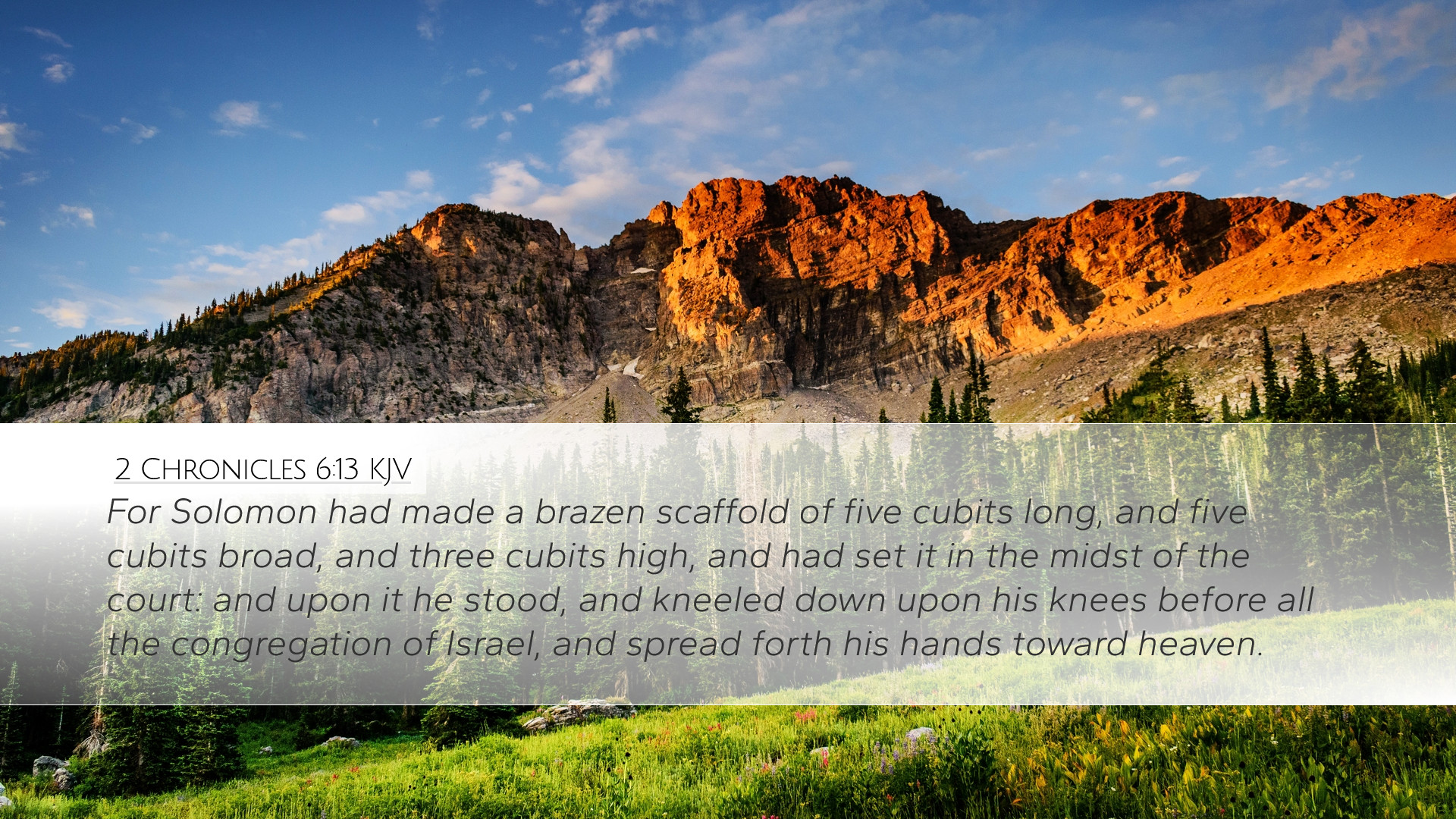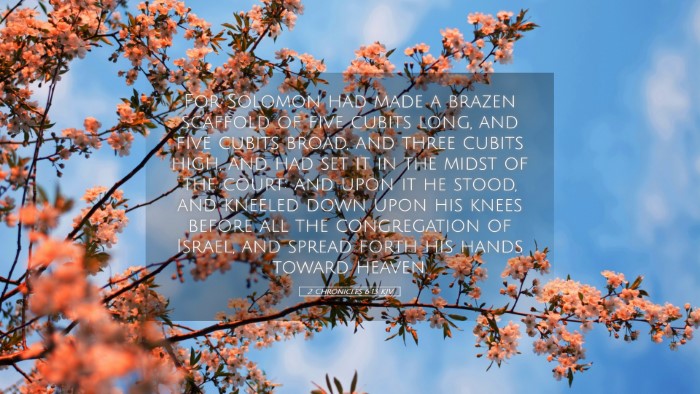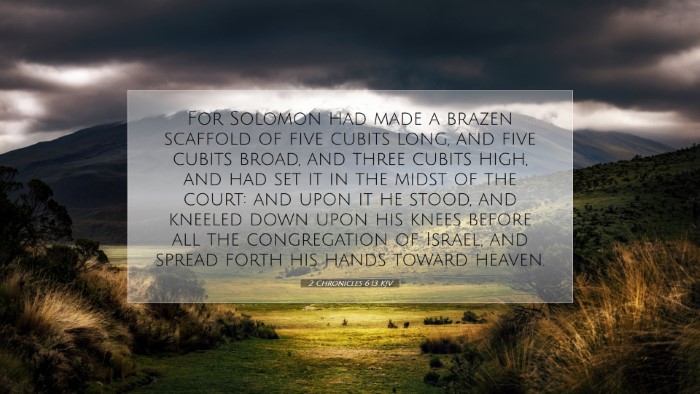Commentary on 2 Chronicles 6:13
Verse Context: 2 Chronicles 6:13 states, “For Solomon had made a brasen scaffold, of five cubits long, and five cubits broad, and three cubits high, and had set it in the midst of the court: and upon it he stood, and kneeled down upon his knees before all the congregation of Israel, and spread forth his hands toward heaven.” This verse serves as a pivotal moment during Solomon's dedication of the temple, highlighting themes of prayer, humility, and the centrality of worship.
Historical Significance
Role of Solomon: Solomon, the son of David, was entrusted with building the temple, a monumental task that symbolized the presence of God among His people. Public domain commentaries, such as those by Matthew Henry, emphasize that this act was not only a personal achievement for Solomon but also a fulfillment of the covenantal promise made to David regarding a lasting temple.
A Physical Representation: Adam Clarke notes that the brasen scaffold was significant, as it elevated Solomon physically and symbolically, demonstrating the importance of the moment. The scaffold acted as a pulpit for public prayer, showcasing the leadership of Solomon in guiding the nation in worship.
The Act of Worship
Posture of Prayer: Solomon's posture—kneeling with hands spread toward heaven—illustrates profound humility. Albert Barnes remarks that this physical demonstration of reverence was crucial in communicating Solomon's dependence on God. Kneeling signifies submission, while the outstretched hands symbolize a desire for God’s blessings and an acknowledgment of divine sovereignty.
Spiritual Insights
This moment serves as an exemplar for contemporary worship leaders and theologians. The act of publicly kneeling to pray fosters a culture of humility and dependence on God rather than on human strength. Public Worship: The assembly of Israel points to the collective nature of worship, emphasizing that it is not merely an individual endeavor but a communal act that binds the people together, seeking God’s presence and favor.
Theological Implications
Communication with God: The act of spreading hands implies a reaching out to God, a desire for connection. According to Matthew Henry, this act illustrates the importance of prayer as a means for believers to seek divine intervention and guidance. In the context of worship, it serves as a reminder that prayer should be grounded in humility and a sincere heart.
Public vs. Private Worship: As Clarke notes, Solomon’s public act of devotion calls Christians today to balance personal piety with communal worship. The commitment to gather together enables believers to experience God's presence through shared faith.
Applications for Today
- Leadership in Worship: Just as Solomon took a stand to lead the people in prayer, pastors and church leaders should strive to guide congregations with both humility and strength in seeking God's will.
- Humility in Prayer: This verse challenges individual believers to adopt a humble posture in their own lives, recognizing their need for divine support.
- Collective Worship Experience: Emphasizing the importance of gathering communities to pray reinforces the biblical principle found throughout Scripture about unity in worship.
Concluding Thoughts
The moment captured in 2 Chronicles 6:13 serves as a significant reminder of the importance of posture, humility, and community in worship. It echoes through history, inviting theologians and pastors to reflect on the nature of their interactions with God and with one another.
In summary, the commentary by Henry, Clarke, and Barnes indicates that this verse encapsulates key theological principles relevant for all forms of worship—inviting a deeper reflection on leadership, humility, and collective faith as we seek to honor God.


